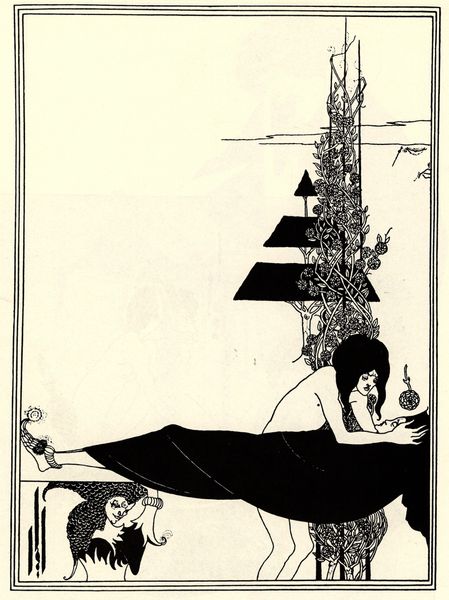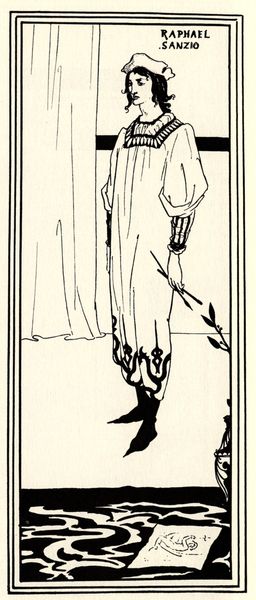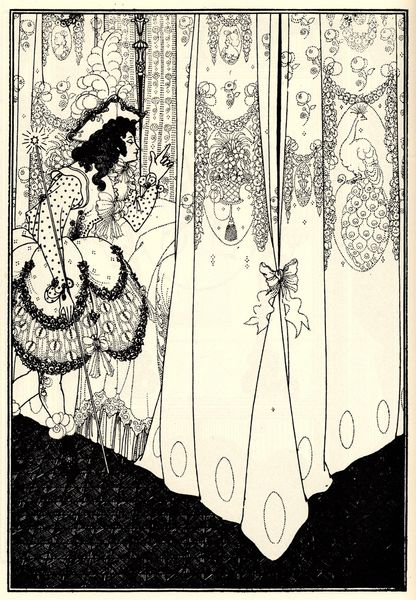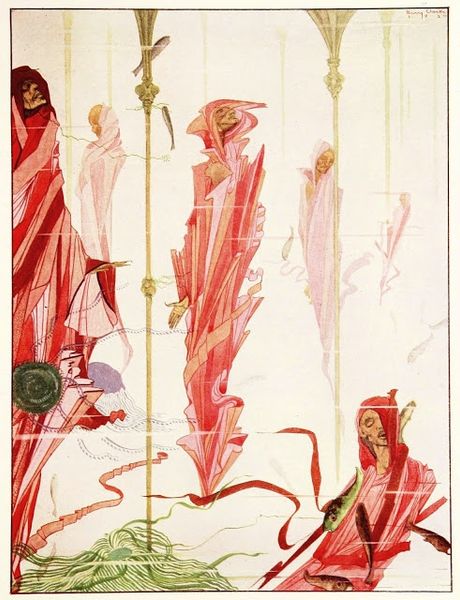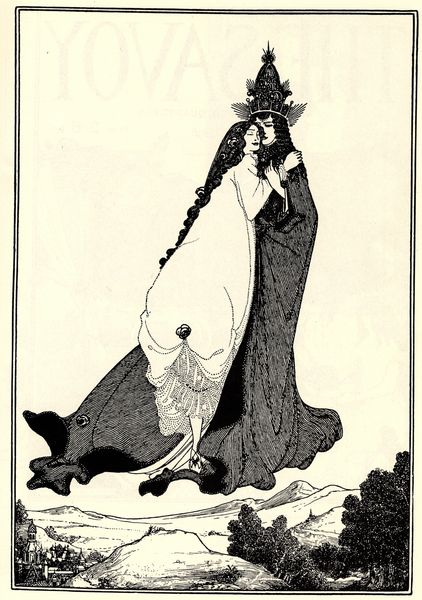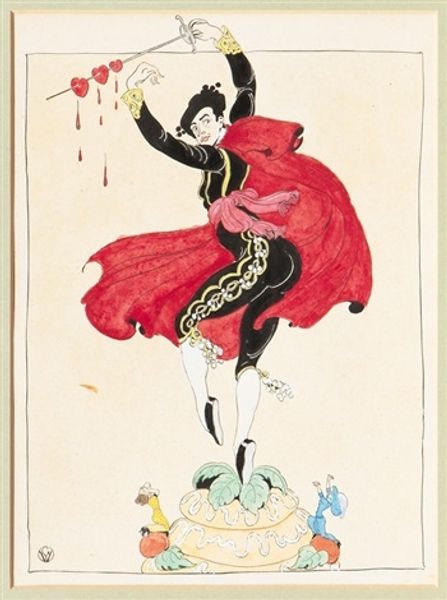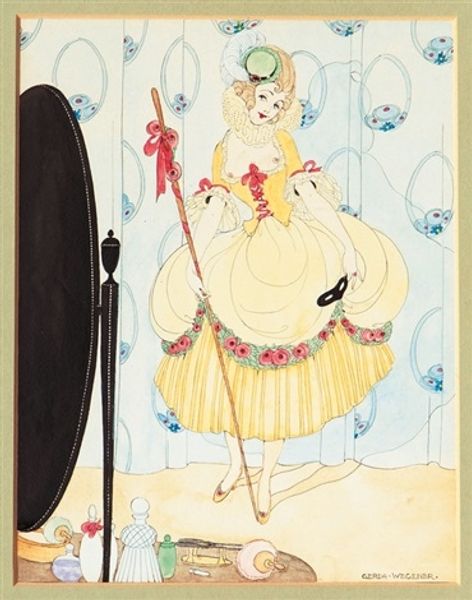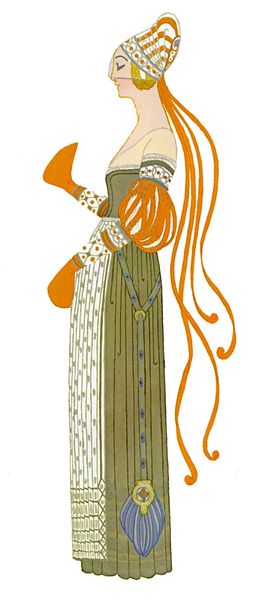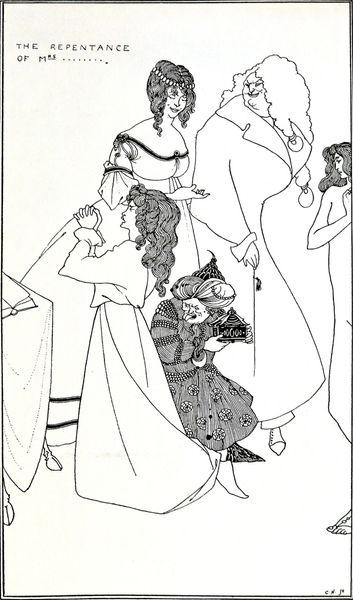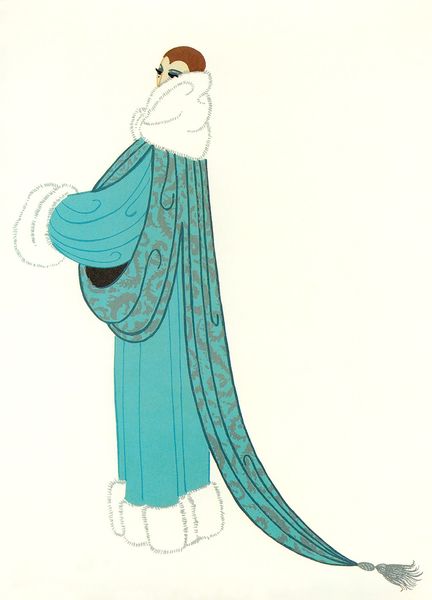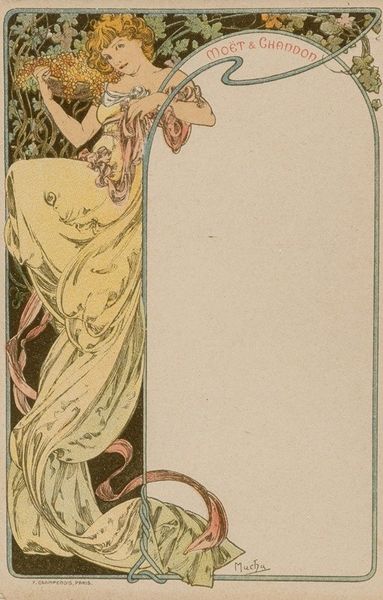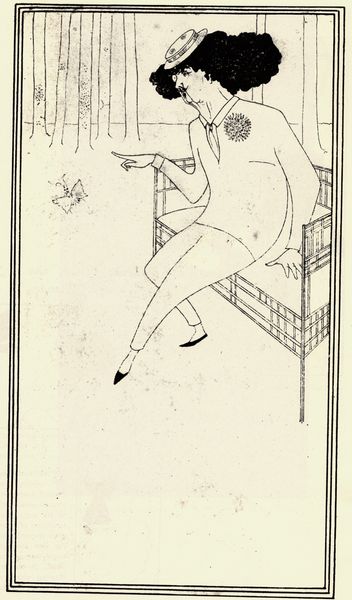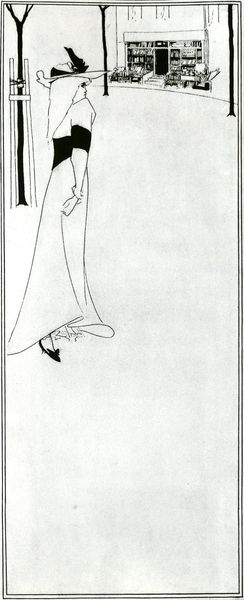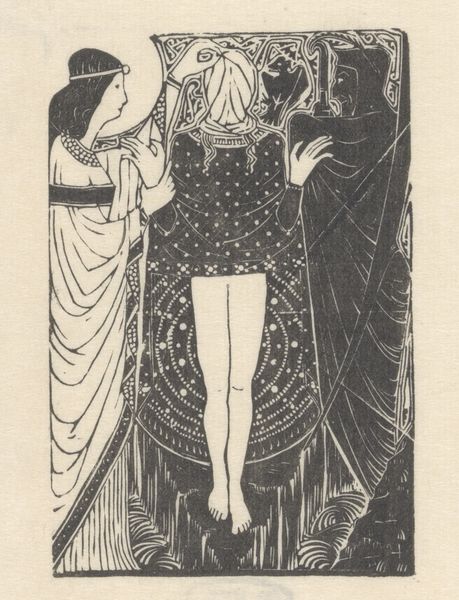
Copyright: Public domain
Curator: Here we have Eleanor Fortescue-Brickdale's drawing, "The sweet and touching tale of Fleur and Blanchefleur," created in 1922. It appears to be a mixed-media piece. What's your first reaction to this image? Editor: Well, the composition strikes me as particularly interesting. The flatness and deliberate outlining contribute to its graphic quality. The limited color palette—red, green, yellow—is also rather effective. Curator: Fortescue-Brickdale's work is often placed within the context of the late Pre-Raphaelite movement and early 20th-century romanticism. Examining it through a feminist lens, one can question the stereotypical portrayal of women within fairy tales, trapped in roles dictated by love or fate. How does this depiction align with, or challenge, prevalent gender norms of the time? Editor: Looking purely at its visual properties, the symmetry in the composition is compelling, almost like a mirrored reflection between the living and deceased figures. The upward reaching posture is mirrored in the figure below. This, of course, could also imply that women were elevated to some artificial stature that restricted rather than enabled expression and action. Curator: Exactly! These narratives often reinforce the objectification of women and their confinement within the domestic sphere. What I find especially poignant here is the contrast between the “sweet and touching tale” as text in the image frames of the tale that unfolds. One might consider how her drawing is implicated in the historical constraints on women's self-determination. Editor: Semiotically, the sword is the most disruptive feature in the image; it is so strikingly poised over Blanchefleur's bowed head as she is kneeling to the youth. It contrasts sharply with the flowers beneath and seems a portent of death but is perhaps intended as something salvific. This duality, caught between possible salvation and the tragic, makes it a gripping narrative. Curator: Indeed, analyzing this artwork prompts consideration of how traditional tales can perpetuate inequality, yet artists, even when illustrating these tales, might subtly critique them, presenting opportunities for alternative readings through their artistic choices. Editor: Focusing on its formal properties reveals intentional symmetries, vivid but sparse use of color, and a flattening that adds a particular gravity to the subject matter. It shows that even a simplified composition can express substantial depth and emotion.
Comments
No comments
Be the first to comment and join the conversation on the ultimate creative platform.
